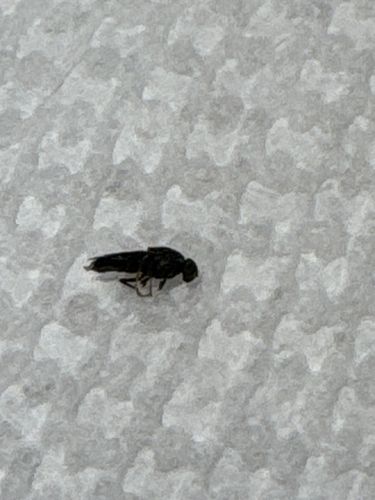Black Soldier Fly
Scientific Name: Hermetia illucens
Order & Family: Diptera (Order), Stratiomyidae (Family)
Size: Typically 12-20 mm (0.5-0.8 inches) in length.

Natural Habitat
Widely distributed globally, often found in decaying organic matter, compost piles, landfills, and areas with animal waste. They thrive in warm and humid environments.
Diet & Feeding
Adult black soldier flies do not feed and rely on fat reserves accumulated during their larval stage. Larvae are voracious eaters of a wide variety of decomposing organic matter including food scraps, agricultural waste, and manure.
Behavior Patterns
Adults are active during the day, often seen flying in a somewhat erratic pattern. They are not attracted to human food or homes in the same way as common house flies. Larvae are highly efficient decomposers, consuming organic waste rapidly and converting it into biomass and frass. They undergo a complete metamorphosis with egg, larval, pupal, and adult stages.
Risks & Benefits
Black soldier flies are not considered pests and pose no known risks to humans (they do not bite or sting, and are not disease vectors). They are highly beneficial in waste management, converting organic waste into valuable protein-rich animal feed (larvae) and nutrient-rich fertilizer (frass). They also help reduce the populations of pest flies by outcompeting them for resources.
Identified on: 10/6/2025